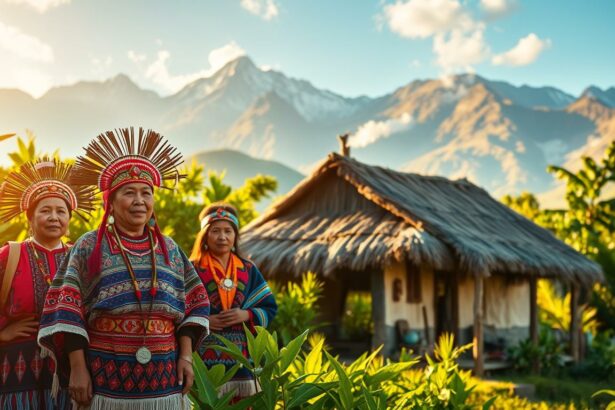Indigenous peoples
Indigenous peoples in Ecuador definition and meaning
Did you know nearly 8% of Ecuador’s population proudly identifies with ancestral roots dating back 11,000 years? Genetic studies reveal a fascinating blend of Indigenous, European, and African ancestry in modern Mestizo communities—proof of a rich, layered history. From ancient Lithic-era tools to the philosophy of Sumak Kawsay ("good living"), these cultures have shaped Ecuador’s identity. Their resilience offers lessons in sustainability and community—values more relevant today than ever. Ready to explore how deep these traditions run? Let’s uncover the stories behind the statistics. Who Are the Indigenous Peoples in Ecuador? Across misty highlands and lush rainforests, diverse ethnic groups preserve ancient ways of life. These communities—guardians of 11,000 years of heritage—blend tradition with modern resilience. Their stories reveal a tapestry of survival, innovation, and deep ecological wisdom. Definition and Historical Presence Ancestral nationalities here aren’t just cultural labels—they’re living legacies. Groups like the Shuar and Chachi trace lineages to pre-Columbian eras. Sumak Kawsay (“good living”) isn’t philosophy; it’s their daily blueprint for harmony with nature. Demographics and Population Distribution Nearly 1.1 million identify with these roots, clustered in three regions: Major Ethnic Groups and Their Stories CONAIE, Ecuador’s largest advocacy group, unites 14 nationalities. Meet three standouts: "The Shuar were feared as head-shrinkers, but their real power? Mastering 100 medicinal plants." The Cofán of Sinangoe patrol their lands with drones, merging tradition with tech. Meanwhile, the Tsáchila, recognized by vivid red hair dye, heal with sacred botanicals. The Rich History of Ecuador’s Indigenous Communities Long before modern borders existed, ancestral cultures thrived in Ecuador’s diverse landscapes. Their legacy, etched in stone and soil, reveals a saga of innovation and resilience. Let’s unravel these layers—one era at a time. Archaeological Periods: From Lithic to Integration The Lithic era (13,000 BCE) left behind razor-sharp obsidian tools. By the 15th century, the Integration Period saw trade networks span the Andes. Key milestones: PeriodTimeframeKey DevelopmentFormative3500–500 BCEFirst pottery & agricultureRegional500 BCE–500 CEMonumental earthworksIntegration500–1500 CEPan-Andean trade routes Pre-Inca Civilizations and Their Legacy The Cañari of the southern highlands baffled invaders with their guerrilla tactics. Meanwhile, the Quitu-Caras conflict weakened regional unity—a fateful rift later exploited by outsiders.…



